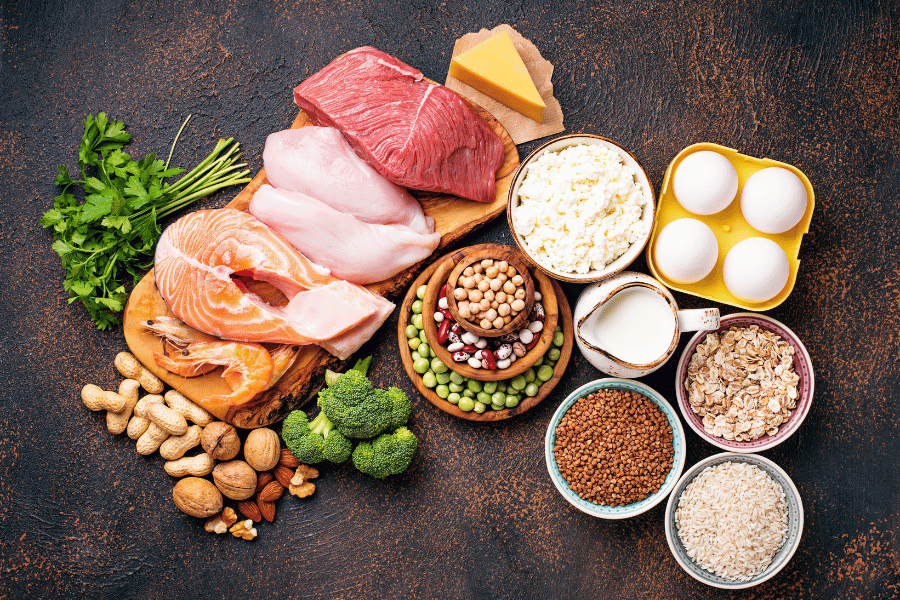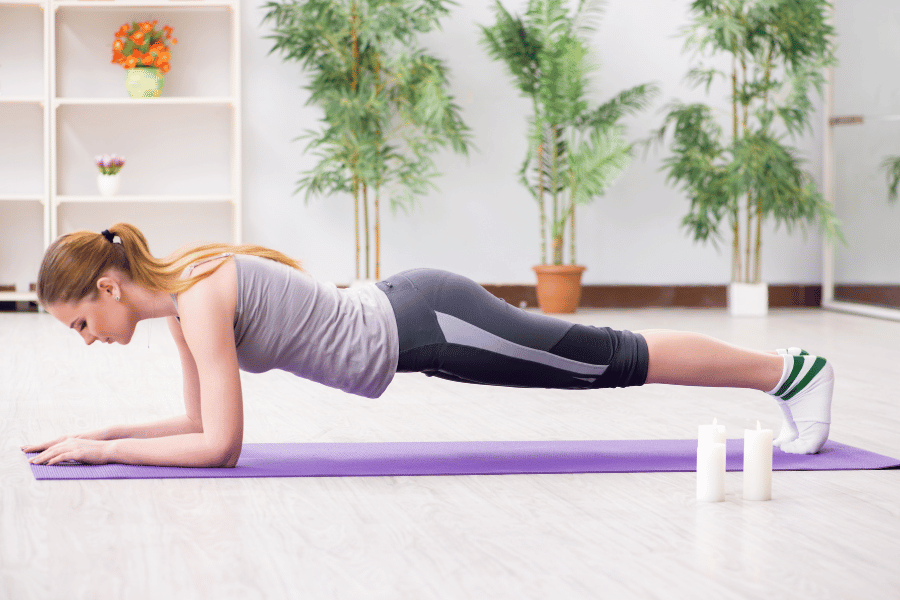When it comes to reducing belly fat, a common misconception prevails: the belief that doing crunches is the most effective way. This notion, though widespread, is not entirely accurate. Crunches, while beneficial for strengthening the abdominal muscles, do little to address the underlying fat. The idea of spot reduction, targeting fat loss at a specific body part through exercise, has been largely debunked by fitness experts and scientific research.
Targeted fat loss with crunches alone is ineffective because it doesn’t address the whole body. Belly fat, like any other fat, requires a comprehensive approach to be effectively reduced. While crunches can tone the abdominal muscles, they don’t specifically burn belly fat. This is why alternatives to crunches are crucial in a belly fat-reduction regimen.
In the following sections, we’ll explore effective methods and exercises, other than crunches, that contribute to overall fat burning, including a holistic approach that encompasses diet, lifestyle, and various forms of exercise. Stay tuned to discover how you can effectively target belly fat without relying solely on crunches.

exercises for belly fat
Understanding Belly Fat: Types and Health Risks
Belly fat is not just a concern for appearance, but it’s also a significant health issue. There are two main types of belly fat: visceral and subcutaneous. Visceral fat is deep fat that surrounds your internal organs, often leading to health complications. In contrast, subcutaneous fat is the layer of fat just under the skin. While both types of fat can be aesthetically displeasing, visceral fat is particularly concerning due to its health implications.
Visceral fat is metabolically active and can increase the risk of serious health problems. Health risks associated with excess belly fat include, but are not limited to, cardiovascular disease, type 2 diabetes, certain types of cancer, and insulin resistance. It’s also linked to metabolic syndrome, a cluster of conditions that increase the risk of heart disease and other health problems.
Reducing belly fat, especially visceral fat, is therefore not just a matter of looking better, but it’s also crucial for overall health. The subsequent sections of this article will delve into effective strategies for belly fat reduction, emphasizing that it’s a combination of diet, exercise, and lifestyle modifications that leads to real and lasting results.

exercises for belly fat
Effective Exercises for Belly Fat Burning (Without Crunches)
While crunches might be the go-to exercise for many seeking a toned tummy, there are more effective exercises for burning belly fat that don’t involve crunches. Let’s explore some key workouts:
- High-Intensity Interval Training (HIIT) for Fat Loss: HIIT involves short bursts of intense exercise followed by rest or low-intensity periods. This type of training is highly effective for burning fat because it increases your metabolic rate even after you have finished exercising. HIIT sessions can include exercises like sprinting, jumping jacks, or burpees.
- Strength Training Targeting Overall Fat Reduction: Strength training is essential for building muscle mass, which in turn helps burn more calories at rest. Full-body workouts or exercises that engage multiple muscle groups at once are particularly effective. Examples include squats, lunges, deadlifts, and push-ups. These exercises help in overall fat reduction, which subsequently affects belly fat.
- Cardiovascular Exercises That Aid in Burning Belly Fat: Cardio exercises, especially those that get your heart rate up, are great for burning calories and fat. This includes activities like brisk walking, running, swimming, or cycling. Consistent cardio workouts can significantly contribute to the reduction of visceral fat, the deep belly fat linked to health risks.
That consistency and variation in exercises are key to effective fat burning. By incorporating these types of exercises into your routine, you can burn calories more effectively and reduce belly fat without relying solely on crunches. In the following section, we will delve into specific core strengthening exercises that also aid in this process.

exercises for belly fat
Core Strengthening Without Crunches
Core strength is vital for overall fitness and posture, and there are many exercises to strengthen the core without resorting to crunches. Here are some effective alternatives:
- Planks and Their Variations: Planks are a powerhouse for core strengthening. They engage not just the abdominal muscles but also the back and shoulders. Variations like side planks, forearm planks, or planks with leg raises add diversity and challenge to your routine. Holding a plank position for even a short duration can effectively strengthen the core.
- Pilates Exercises Focusing on Core Strength: Pilates is renowned for its focus on core strength, flexibility, and balance. Exercises such as the Hundred, Roll-Up, and Teaser are excellent for engaging the deep core muscles without the strain that crunches can put on your neck and back.
- Stability Ball Exercises for Core Stability and Strength: Using a stability ball can enhance core workouts by adding an element of balance. Exercises like ball passes, ball crunches (a gentler alternative to traditional crunches), and stability ball V-passes are effective for engaging the entire core.
Incorporating these exercises into your fitness routine can lead to a stronger, more toned core, and contribute to overall belly fat reduction. Remember, consistency is key, and pairing these exercises with cardiovascular workouts and a healthy diet will yield the best results. In the next section, we will discuss dietary tips that complement your exercise regimen for effective belly fat reduction.
Dietary Tips to Complement Exercise Regimen
Alongside exercise, diet plays a pivotal role in reducing belly fat. Here are some dietary tips that can complement your exercise regimen:
- Foods to Include for Belly Fat Reduction:
- Lean Protein: Incorporate lean sources of protein like chicken, turkey, fish, beans, and lentils. Protein helps build muscle and can aid in weight loss by keeping you feeling fuller for longer.
- Fiber-rich Foods: High-fiber foods like vegetables, fruits, whole grains, and legumes are essential. Fiber aids in digestion and can help reduce visceral fat.
- Healthy Fats: Include sources of healthy fats such as avocados, nuts, seeds, and olive oil. These fats are not only good for your heart but also help you feel satisfied after meals.
- Foods to Avoid:
- Reduce intake of processed foods, sugary snacks, and beverages. These contribute to fat accumulation, especially around the belly.
- Limit high-sodium foods, which can cause water retention and bloating.
- Importance of Hydration:
- Drinking plenty of water is crucial. It helps in digestion and keeps you hydrated. Sometimes thirst is mistaken for hunger, so staying hydrated can also help you avoid overeating.
- Fiber Intake:
- Aim for a diet high in fiber. It not only aids in digestion but also helps in stabilizing blood sugar levels, which can reduce cravings and aid in fat loss.
Combining these dietary strategies with the exercise routines discussed in previous sections can significantly enhance your efforts to reduce belly fat. Remember, it’s not about quick fixes but sustainable habits that lead to long-term health and fitness. In the following sections, we will address frequently asked questions and provide tips to customize your belly fat-burning routine.
FAQ Section
FAQ: Customizing Your Belly Fat-Burning Routine
Q: How can I adapt exercises for different fitness levels? A: Modify exercises based on your current fitness level. Beginners can start with low-impact variations and gradually increase intensity. For advanced individuals, incorporating weights or increasing the duration and intensity of exercises can offer more challenge.
Q: How often should these exercises be performed? A: A balanced routine can be practiced 3-5 times a week, depending on your fitness level and goals. Remember to include rest days to allow your body to recover.
FAQ: Overcoming Plateaus in Belly Fat Reduction
Q: What should I do if my progress in reducing belly fat stalls? A: If you hit a plateau, consider varying your workout routine and intensifying your exercises. Also, re-evaluate your diet and ensure it’s aligned with your goals. Sometimes, small adjustments can reignite progress.
Q: How important are rest and recovery in ongoing fat loss? A: Rest and recovery are crucial. They allow your muscles to heal and grow stronger. Over-exercising without adequate rest can lead to fatigue and hinder your progress. Ensure you’re getting enough sleep and including rest days in your routine.